Search Images
Browse Content (p. 1624)
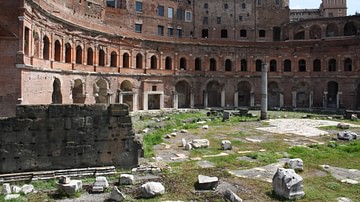
Image
Trajans Market, Rome
Trajan's Market in Rome, 107-110 CE. The complex was originally on three street levels and only a part was devoted to commercial purposes. The upper level included a covered shopping arcade whilst the lowest level alcoves set in the semicircular...
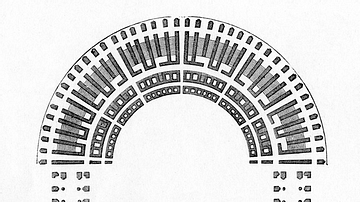
Image
Floor Plan, Theatre of Marcellus
The floor plan of the theatre of Marcellus, Rome, late 1st century BCE.
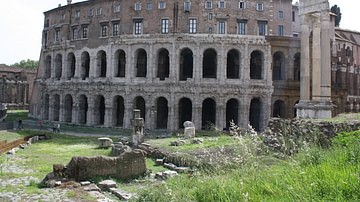
Image
Theatre of Marcellus, Rome
The theatre of Marcellus, near the Capitoline Hill, Rome. Begun under Julius Caesar, the project was completed under Augustus and the theatre was named after the son of Octavia who, before his death in 23 BCE, was Augustus' heir. Built in...
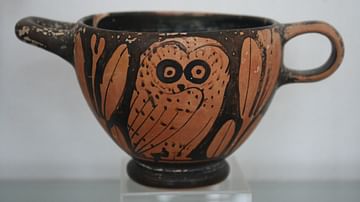
Image
Red-Figure Owl Cup
A cup depicting an owl in the red-figure style. Attributed to the Marlay painter, third quarter 5th century BCE. (Archaeological Museum of Mykonos)

Image
Theatre, Delos
The theatre of Delos, c. 300 BCE. The theatre had a capacity for 5,000 spectators and the front row has marble seats with backs for dignitaries.
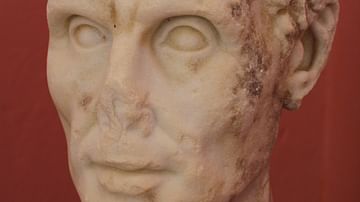
Image
Roman Portrait Bust
A roman portrait bust of an unknown man, 2nd century BCE. From the palaestra of Delos. The bust is a typical example of the sometimes unflattering realism of Roman portraiture.
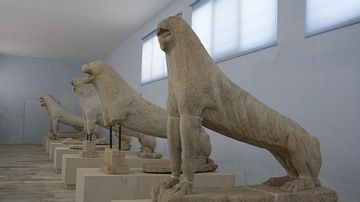
Image
Lions of Delos (Originals)
The original marble lions inside the site museum of Delos (those outside being copies). Originally there were as many as nine lions which lined the avenue leading from the sanctuary to the harbour of Skardanas. They were donated by the citizens...
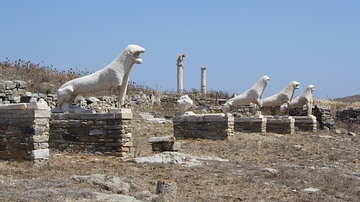
Image
Lions of Delos
The marble lions of Delos. Originally there were as many as nine lions which lined the avenue leading from the sanctuary to the harbour of Skardanas. They were donated by the citizens of Naxos in the 7th century BCE.
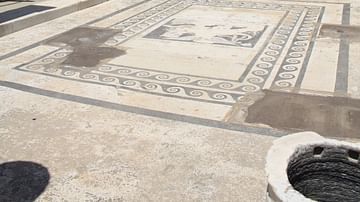
Image
House of Dionysos, Delos
The 5.8 m high columns of the atrium of the House of Dionysos, Delos. 3rd-2nd century BCE. The famous mosaic depicting Dionysos riding a tiger was discovered here.
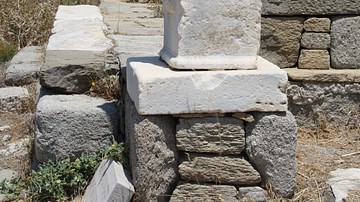
Image
Column Phallus, Delos
Two columns topped by a phallus, each carrying relief scenes of Dionysos and Pan, c. 300 BCE. The phallus was a typical symbol of the cult of Dionysos. They stand as part of the Stoivadeion, a rectangular exedra.